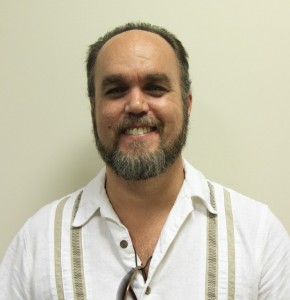 In the early 1990s a young Englishman walked up the steep mountainside that surrounds Rio de Janeiro and into a favela, a slum unlike anything seen in the United States. It was a place ruled by drug gangs and the daily scene of murders and gun fights between the inhabitants and the police. He walked in and began talking to some kids about what was happening in their lives. Nearly 20 years later, the justice and educational systems of Brazil have been altered, and the work he started there has spread around the world.
In the early 1990s a young Englishman walked up the steep mountainside that surrounds Rio de Janeiro and into a favela, a slum unlike anything seen in the United States. It was a place ruled by drug gangs and the daily scene of murders and gun fights between the inhabitants and the police. He walked in and began talking to some kids about what was happening in their lives. Nearly 20 years later, the justice and educational systems of Brazil have been altered, and the work he started there has spread around the world.
As I write this I am in Champaign-Urbana, Ill., a 12-hour-drive from my home in Kennesaw, Ga. I am here to study and practice something called Restorative Circles. I have come so far because the creator, or as he prefers, the discoverer, of this process is leading the five-day seminar. His name is Dominic Barter, the Englishman who has lived and worked for two decades in Brazil.
Dominic Barter went into the danger and chaos of the favela with the intention to make his world safer. He readily admits that he was fearful most of the time, but he continued to go. He began to speak to kids at first, helping them solve their conflicts. Eventually he was introduced to older siblings and parents, and the method he created began to be used by more people. After nearly a decade of this work he was invited to help design conflict resolution systems that could be used in schools, courts, prisons and many other places. The utilization of Restorative Circles in many civic arenas has become common, including the juvenile court system.
It is remarkable that one man, with no particular academic or professional credentials, could walk into a favela with only an intention to help, and two decades later be leading changes in the legal and educational systems of a country with nearly 200 million people. For me this speaks to the power of individuals to affect change, and glaringly points out the unwillingness of the “average” American to get involved in uncomfortable issues.
Restorative Circles are simple but powerful. With a minimum of training anyone can learn to facilitate circles. In fact, after being taught the method, schoolchildren began to spontaneously call and conduct their own circles, only involving adults if they were part of the conflict. As in many methods of restorative justice, RC (as it is known) eliminates the language typically used in criminal justice. Instead it focuses on specific actions and the consequences of those actions on human relationships.
Restorative Circle process first identifies what has happened and who was affected. It then brings these people together with three goals. The first goal is mutual comprehension. The second goal is self responsibility, and the third is a specific plan to restore the relationship and repair harm. These things are facilitated through dialogue, guided by a series of questions that lets all involved speak their truth while helping them remain connected to their own power of choice. The process ends with an agreement to monitor the resolution concretely, and to change it accordingly.
I do not mean to make this sound easy. It can be incredibly difficult to shift our own thinking from the punitive framework that pervades our culture to one that has the aim of sharing power and taking responsibility for our own actions. It is well worth the effort though, and I believe it has the power to bring real change. It may seem hopeless to some, but with persistence and the willingness of more people to get involved, it can work.
